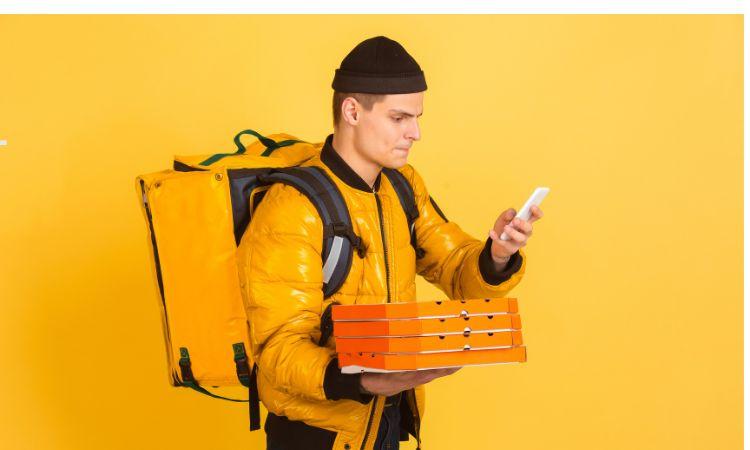United States Online Food Delivery Market Trends & Insights

Exploring the United States Online Food Delivery Market
In recent years, the United States online food delivery market has undergone a dramatic transformation. What once started as a convenient way to order pizza has evolved into a multibillion-dollar industry driven by technology, consumer expectations, and lifestyle changes. From coast to coast, Americans are increasingly relying on food delivery platforms to bring meals from their favorite restaurants straight to their doorstep.
This shift is not just about convenience. It reflects broader trends in urbanization, mobile app usage, and even social behaviors, particularly among younger generations. With options ranging from fast food and fine dining to healthy meal kits and groceries, the digital dining experience has become an integral part of American culture.
Expert Market Research Insight
According to Expert Market Research, the United States online food delivery market continues to demonstrate strong growth potential, driven by factors such as expanding internet penetration, increased smartphone usage, and rising demand for convenience. The sector is expected to see ongoing innovation, with AI-based order suggestions, drone deliveries, and voice-command ordering on the horizon.
Expert Market Research notes that consumer preferences are also becoming more refined. People are looking for healthier food options, greater transparency in ingredients, and better overall user experience. This shift is pushing platforms to improve logistics, customer service, and data-driven personalization.
Their insight suggests that companies that prioritize customer loyalty, green delivery options, and seamless app performance will remain competitive as the market matures.
Digital Dining and Urban Convenience
One of the key drivers behind the surge in online food delivery is urbanization. In cities like New York, Los Angeles, and Chicago, where traffic congestion and busy schedules dominate daily life, ordering food through apps like DoorDash, Uber Eats, and Grubhub is far more efficient than dining out or cooking at home.
Tech-savvy consumers in these regions appreciate not only the speed but also the user-friendly interface, personalized recommendations, and various payment options these platforms provide. These apps also feature loyalty programs and real-time order tracking, making them more attractive than traditional phone-in orders.
Meanwhile, suburban and even rural areas are seeing a growing number of delivery options as platforms expand their networks and restaurants partner up to widen their reach.
Regional Insights: East Coast vs. West Coast Preferences
While the demand for food delivery is nationwide, regional preferences vary significantly. On the East Coast, especially in areas like Boston and Washington D.C., there is a high demand for ethnic cuisines, vegetarian meals, and farm-to-table services. Consumers here tend to prioritize healthy and sustainable food choices, and platforms that offer niche restaurant options often perform better.
On the West Coast, particularly in California and Seattle, there’s a noticeable focus on organic, plant-based, and eco-friendly packaging. Delivery services that highlight environmental responsibility and menu transparency have built strong customer loyalty in these regions.
Midwestern cities, including Minneapolis and Kansas City, are seeing increased use of online delivery for comfort food, family meals, and local diner options, reflecting a mix of traditional tastes with modern convenience.
A Shift in Consumer Behavior
The growth of the United States online food delivery market is not only due to technological adoption but also evolving consumer behavior. Millennials and Gen Z are at the forefront of this shift. These groups value experiences, flexibility, and speed. They are more likely to spend money on dining experiences and are comfortable navigating mobile apps for ordering food, customizing meals, and tipping digitally.
The pandemic further cemented this trend, accelerating the adoption of delivery apps even among older demographics. Many users who were once hesitant have now become regular customers, with expectations of fast, reliable, and hygienic delivery.
The Role of Cloud Kitchens and Virtual Brands
One of the most disruptive developments in the online food delivery ecosystem is the emergence of cloud kitchens—commercial cooking spaces optimized for food delivery rather than dine-in service. These kitchens allow restaurants to save on overhead costs and experiment with virtual brands that only exist online.
Major cities like San Francisco, Miami, and Dallas have become hotspots for cloud kitchens, where brands can operate several menus out of a single location. This model allows food delivery platforms and restaurant entrepreneurs to meet rising demand while maximizing profit margins.
Challenges and the Road Ahead
Despite the growth, the online food delivery industry faces challenges. High delivery fees, inconsistent service quality, and labor-related concerns have sparked criticism. Drivers often face pressure from tight schedules, low tips, and complex delivery logistics. Some cities are even considering regulations to support delivery workers and limit commissions charged to small restaurants.
On the other hand, technology and AI-driven logistics promise more efficient deliveries and better user experience. Companies investing in electric vehicles, smart route optimization, and sustainable packaging are likely to stand out in an increasingly crowded marketplace.
- Vibnix Blog
- Politics
- News
- Liberia News
- Entertainment
- Technology
- Onderwijs
- Art
- Causes
- Crafts
- Dance
- Drinks
- Film
- Fitness
- Food
- Spellen
- Gardening
- Health
- Home
- Literature
- Music
- Networking
- Other
- Party
- Religion
- Shopping
- Sports
- Theater
- Wellness



